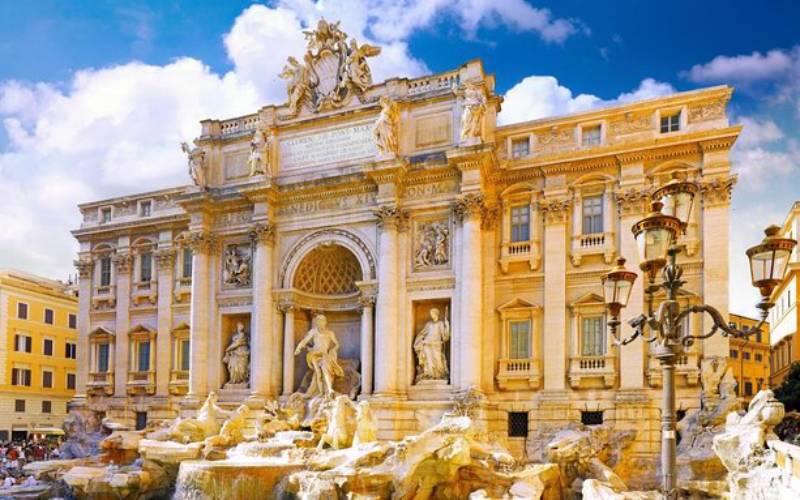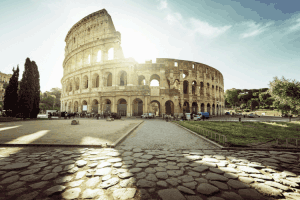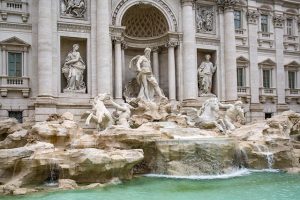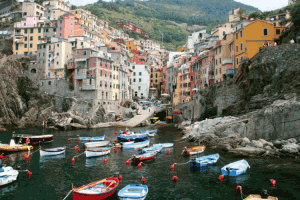A representation of history, culture, and art is the Trevi Fountain. It’s located right in the center of Rone, Italy. The majestic Baroque design and intriguing historical legends of the Trevi Fountain have tourists from all over the world. In this blog post, we will see 15 incredible Trevi Fountain facts, shedding light on its long history, fine craftsmanship, and classic appeal.
15 Incredible Trevi Fountain Facts Listed Below
1. The fountain is charitable
Every day, when the fountain is running, those who practice the ritual of tossing coins over their shoulders throw about €3,000 worth of coins into it. There is a tale that says you can guarantee a trip back to Rome by throwing a cent into the fountain. The ancient Romans, who regularly threw pennies into the sea to invoke the assistance of the water gods and guarantee their safe return home, are credited with starting this tradition. Add another coin, or perhaps a third, for wedding bells if you’re searching for love!
Many people are unaware that the monies are gathered each night and donated to Caritas, an Italian charity. Caritas then uses the funds for a grocery program that provides rechargeable cards to Rome’s needy to help them get groceries.
2. The original architect passed away before it was finished.
Similar to the Sagrada Família church in Barcelona, Nicola Salvi, the original architect of the Trevi Fountain in Rome, passed away before his design could be realized.
Pope Clement XII held a competition in 1730 to select an architect for the fountain, and Salvi was defeated by Alessandro Galilei. However the victory of a Florentine infuriated Rome’s populace, and Salvi was eventually appointed to oversee the project. Salvi passed away in 1751, and construction started in 1732. Sculptor Pietro Bracci continued the work after his death, seeing it through to completion in 1762.
3. The Fountain has appeared in many well-known motion pictures.
Not exclusively is the Trevi Fountain a famous traveler objective around the world, yet it likewise makes a fabulous stage prop! Beside La Dolce Vita, which shows Anita Ekberg plunging into the Trevi Fountain while as yet wearing her garments, the enormous landmark has shown up in various movies, including Roman Occasion, Three Coins in the Fountain, and, surprisingly, The Lizzie McGuire Film. It’s even the motivation for the wellspring at Epcot at Walt Disney World!
Read More : THE ULTIMATE ROME TRAVEL GUIDE
4. It’s not who you believe it is—the sea god in the center.
Of course, Neptune, the Roman god of freshwater, would be the most fitting deity to occupy the center of the Trevi Fountain. But that god turns out to be Oceanus, the Greek sea god, as shown by the way mermaids and seahorses flank him. The various qualities of rivers and oceans are depicted by the statues symbolizing Rome trevi fountain history.
5. It has experienced vandalism.
Graziano Cecchini, an Italian activist, protested corruption in Rome by dying the Trevi Fountain’s water crimson in 2007 and 2017. Reports from the time of the incidents state that Cecchini had no intention of permanently harming the landmark, which the act obviously did not do. In both cases, the priceless stone had not had time to absorb the stain before the fountain was swiftly emptied.
6. Some of the fountain’s components started to disintegrate, thus emergency repairs happened.
Following a severe winter in 2012, fragments of cornice started to drop from the ancient fountain, necessitating restoration right away. June 2014, two years later, saw the fountain emptied, covered in scaffolding for a total of seventeen months. Renovations included the addition of a basin to its base so that the coin-throwing ritual could continue.
7. The cost of swimming in the Trevi Fountain is €450.
On a hot summer day, it would seem tempting to cool off in the soothing fountain, but swimming in the Trevi is strictly forbidden by the authorities. Having done it myself, I can tell you that “the police will wait for you [and] ask for your documents and will fine you the juicy amount of €450.” Avoid breaching the fountain since it could jeopardize the integrity of this magnificent resource, even if users seem to have no regrets about the expensive swim (“It’s totally worth it,” they say). Instead, opt to cool down in the hotel pool.
 img credit: https://www.viator.com/
img credit: https://www.viator.com/
8. The “Ace of Cups” sculpture was intended as payback.
It’s believed that the noise and trash from the construction of the fountain regularly irritated a nearby barber. He would berate Salvi with his dismay every day. With resentment, Salvi placed the sculpture “Ace of Cups” to the left of the fountain, preventing the barber from ever seeing the finished work.
9. This fountain site dates back to ancient Rome.
The ancient Aqua Virgo aqueduct ends at the Trevi Fountain, which gets its name from the intersection of three roads (tre vie in Italian).
The aqueduct was built in 19 BCE, and it was called for a lovely virgin who supposedly guided thirsty warriors to a spring that used to be at this exact location. A major supply of water for Rome’s busy center and numerous public baths was provided by the aqueduct.
10. It is constructed from the same substance as the Colosseum.
The majority of the fountain is composed of travertine stone, which gets its name from the Latin for “from the Tiber.” A calcium carbonate mineral, most likely from the city of Tivoli, some 22 miles from Rome, was created from spring waters, especially hot springs. Many individuals suffered injuries and even lost their lives while working with massive blocks of stone during building; one such guy was a stonecutter who was crushed in 1734 by a big block of travertine.
Read More: A WEEK-LONG ITALY ITINERARY
11. Stealing coins from the Trevi is illegal.
It’s forbidden to fish coins out of the fountain, maybe for that exact reason. It used to be usual for bands of robbers to remove the coins from the fountain at night. In fact, in 2011 a television program used a hidden camera to capture three. Roberto Cercelletta, the most well-known raider, went under the moniker d’Artagnan. Before he was apprehended in the summer of 2002, he had been stealing coins from the fountain for thirty-four years.
12. A lot of water is used by the Trevi Fountain.
The enormous Trevi Fountain is over 65 feet wide and 85 feet tall. Every day, the fountain releases around 2,824,800 cubic feet of water due to its numerous water sources and enormous pool in front! But don’t worry, the water is recycled today. This implies that you will have to use the neighboring drinking fountains, unlike the Romans of antiquity!
13. You can attribute the fountain’s existence to gambling.
Salvi’s fountain idea was also the least priced, which might have been a deciding factor for Pope Clement. In any event, the third lottery extraction was utilized to fund the works when the pope gave his approval. Yes, the time Trevi Fountain was financed by the proceeds from the lottery’s reintroduction! In case you were curious, the first extraction’s numbers were 56, 11, 54, 18, and 6.
14. The three streets that precede the Trevi are what gave rise to its name.
The Trevi Fountain’s huge monument inside a tiny plaza is part of what makes it so amazing. Before you even see the fountain, you will hear it, and then the imposing white stone will suddenly appear. The three roadways that ascend to the landmark are angled, which produces this effect.The name Trevi Fountain begins from the Italian expression “tre compete,” which alludes to three roads.
15. Consistently, 1,200 vacationers come to see the Trevi Fountain.
The best free sight to find in Rome is the Trevi Fountain. A normal of 1,200 individuals visit the wellspring every hour, subject matter authorities agree. Obviously, during the day at the level of summer, you will experience essentially more prominent groups than around evening time or in the colder time of year. This compares to 10.5 million guests to the Trevi Fountain yearly. Rome is pondering raising blockades around the Fountain to deal with the groups, yet many individuals are worried that this will bring down the landmark’s magnificence.
Conclusion
These are some amazing facts about the Trevi Fountain, it is apparent that this structural miracle addresses the grandness and soul of Rome itself, going past straightforward stone and water. From its unassuming starting points as a noteworthy water supply to its flow remaining as an overall milestone, the Rome Trevi Fountain never neglects to flabbergast and stun all who see it. The Trevi Fountain is a wonderful sign of Rome’s enduring legacy, whether you’re examining an outing there or are simply taking in its excellence in a good way. Rome is perhaps the most dazzling city on the planet.






